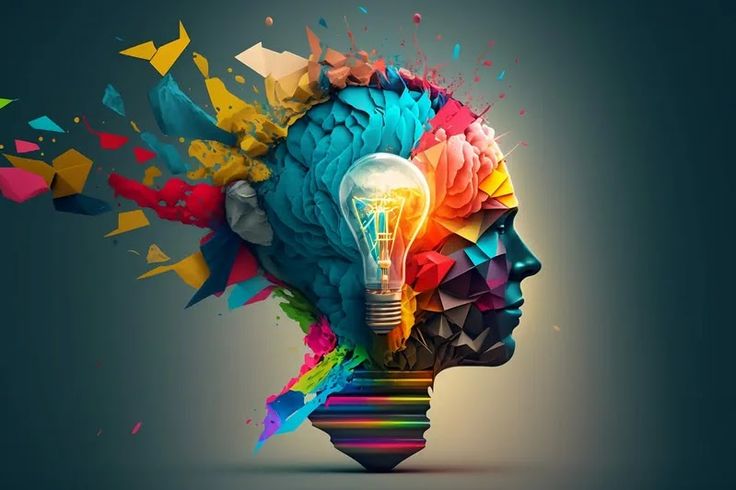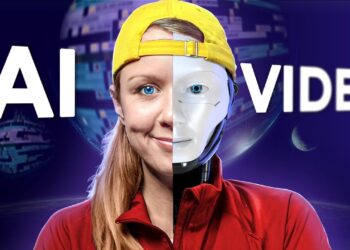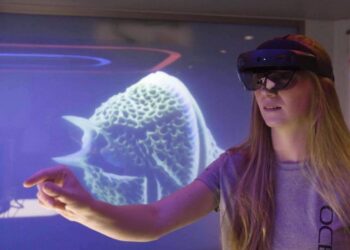In an era defined by rapid technological advancement, creative professionals—from graphic designers and video editors to UX/UI specialists and 3D artists—are continually seeking innovative software and platforms to streamline their workflows, boost productivity, and elevate the quality of their work. The landscape of creative tools has evolved dramatically: once-monolithic desktop applications have given way to cloud-based suites, AI-driven assistants, and collaborative environments that break down silos and foster real-time teamwork. In this comprehensive guide, we explore the next-generation tools that are reshaping the creative industry in 2025 and beyond. Whether you’re a seasoned professional or an aspiring creator, this article will help you navigate the cutting-edge solutions that can transform your creative process.
1. AI‑Powered Design Tools
Artificial intelligence has become a game‑changer in design, automating repetitive tasks and offering intelligent suggestions that free designers to focus on high‑level creativity. From intelligent image editing to generative layouts, these tools leverage machine learning models trained on massive datasets to understand composition, color theory, and user intent.
Key Features of AI‑Driven Design Suites: A. Intelligent Image Enhancement
Automatically remove backgrounds, correct colors, and upscale low‑resolution images with a single click.
B. Generative Layouts
Produce multiple layout variations based on content hierarchy and responsive breakpoints.
C. Content‑Aware Fill & Retouch
Seamlessly eliminate unwanted objects or blemishes while preserving surrounding textures.
D. Style Transfer & Filters
Apply artistic styles—such as watercolor, oil painting, or retro film—using deep neural networks.
E. Automated Typography Suggestions
Recommend font pairings and typographic scales aligned with your brand guidelines.
Leading AI‑Powered Tools:
-
Adobe Sensei: Integrated across Adobe Creative Cloud, Sensei powers features like auto‑masking in Photoshop and intelligent audio cleanup in Premiere Pro.
-
Canva AI: Web‑based platform offering AI text‑to‑image generation, one‑click color palettes, and brand kit enforcement.
-
Runway ML: Provides creative machine‑learning models for video editing, green‑screen removal, and generative video effects.
2. Collaborative Cloud‑Based Platforms
The shift to remote and distributed teams has accelerated the adoption of cloud‑native creative environments. These platforms enable multiple stakeholders—designers, developers, marketers—to collaborate on a single canvas, provide feedback in real time, and maintain version control without manual file sharing.
Benefits of Cloud Collaboration: A. Real‑Time Co‑Editing
Multiple users can work on the same project simultaneously, with live cursors and instant updates.
B. Centralized Asset Management
Store design systems, libraries, and style guides in a shared repository accessible to all team members.
C. Integrated Commenting & Annotation
Pin feedback directly to design elements, reducing email chains and meeting times.
D. Version History & Rollback
Track every change, compare iterations, and revert to previous states if needed.
E. Cross‑Platform Access
Work seamlessly from desktop, web browser, or mobile devices without losing fidelity.
Top Collaborative Tools:
-
Figma: The industry standard for UI/UX design collaboration, offering robust prototyping, design systems, and plugin support.
-
Miro: An online whiteboard for brainstorming, user‑journey mapping, and agile sprint planning.
-
Notion: All‑in‑one workspace combining notes, databases, and project boards—ideal for creative briefs and asset tracking.
3. Advanced Video Editing & Motion Graphics
Video content remains king in digital marketing and entertainment. Next‑generation video editors and motion‑graphics tools incorporate AI‑assisted workflows, real‑time collaboration, and cloud rendering to handle everything from social media clips to feature‑length films.
Core Capabilities of Modern Video Suites: A. AI‑Assisted Editing
Automatically generate rough cuts, highlight reels, or social media teasers based on scene detection.
B. Cloud Rendering & Proxies
Offload compute‑intensive rendering to cloud servers, enabling 4K+ workflows on modest hardware.
C. Integrated Motion‑Graphics Templates
Access libraries of customizable animations, lower thirds, and transitions.
D. Audio Ducking & Cleanup
Auto‑adjust background music levels and remove noise or echo from dialogue tracks.
E. Multi‑User Timelines
Collaborate on the same timeline with granular permission controls and change tracking.
Premier Video & Motion Tools:
-
DaVinci Resolve: Combines professional editing, color grading, audio post‑production, and visual effects in a single application.
-
Adobe After Effects (with AI Plugins): Harnesses Sensei‑powered features like Content‑Aware Fill for video and auto‑animate keyframes.
-
Frame.io: Cloud‑based review and approval platform that integrates with major NLEs for seamless feedback loops.
4. 3D Modeling, VR & AR Tools
Three‑dimensional content and immersive experiences are no longer niche. From product visualization to virtual showrooms and AR marketing campaigns, creative professionals need tools that support high‑fidelity modeling, real‑time rendering, and easy deployment across devices.
Advantages of Immersive Creation Suites: A. Real‑Time Ray Tracing
Preview realistic lighting, reflections, and shadows without long render times.
B. Physics‑Based Simulations
Generate accurate cloth, fluid, and particle effects for lifelike animations.
C. Cross‑Platform Export
Deploy to web (WebGL), mobile AR, VR headsets, or game engines with minimal adjustments.
D. Collaborative Scene Editing
Co‑author 3D scenes in real time, complete with asset libraries and version control.
E. Low‑Code Scripting
Use visual scripting tools to add interactivity without writing complex code.
Noteworthy 3D & Immersive Tools:
-
Blender: Open‑source powerhouse offering modeling, sculpting, animation, and compositing—now with Eevee real‑time engine.
-
Unity & Unreal Engine: Widely used for game development, also popular for architectural visualization and interactive experiences.
-
Adobe Aero: Enables designers to build and share AR experiences without coding.
5. Workflow Automation & Project Management

Managing complex creative projects demands robust systems for task tracking, asset handoffs, and process automation. Next‑gen platforms integrate seamlessly with design and development tools to automate notifications, approvals, and repetitive tasks.
Key Automation & PM Features: A. Automated Task Creation
Generate tasks from design comments or email requests using AI parsing.
B. Integration with Creative Apps
Sync deadlines, deliverables, and asset versions across Figma, Adobe CC, and Git repositories.
C. Customizable Workflows
Build kanban boards, Gantt charts, or calendar views tailored to your team’s methodology.
D. Automated Notifications & Reminders
Trigger alerts for upcoming deadlines, stalled tasks, or feedback requests.
E. Reporting & Analytics
Monitor team velocity, resource utilization, and project health through dashboards.
Popular Automation & PM Solutions:
-
Asana: Offers rules‑based automation, timeline views, and integrations with Slack, Google Drive, and more.
-
Monday.com: Highly customizable boards with automation recipes and visual dashboards.
-
Zapier & Make: Connect hundreds of apps to automate file transfers, notifications, and data updates without code.
6. Content Management & Publishing Platforms
Whether you’re managing a blog, a portfolio site, or an e‑commerce storefront, modern CMS and headless platforms empower creative teams to publish content faster, maintain consistency, and optimize for SEO without developer bottlenecks.
Essential CMS Capabilities: A. Headless Architecture
Decouple content creation from front‑end delivery, enabling omnichannel publishing.
B. Visual Page Builders
Drag‑and‑drop interfaces with prebuilt blocks and responsive controls.
C. Built‑In SEO Tools
Automated XML sitemaps, meta‑tag templates, and schema markup generation.
D. Multi‑Site & Multilingual Support
Manage multiple brands or language versions from a single dashboard.
E. Content Workflows & Permissions
Define roles, approval steps, and publishing schedules for streamlined collaboration.
Leading CMS & Publishing Platforms:
-
WordPress (with Gutenberg): Still the world’s most popular CMS, now more flexible with block‑based editing and headless options.
-
Contentful: Enterprise‑grade headless CMS with robust APIs and developer SDKs.
-
Ghost: Lightweight, Markdown‑based platform optimized for blogging and newsletters.
7. Analytics, Optimization & SEO Tools

Data‑driven decision‑making is crucial for maximizing reach and engagement. Next‑gen analytics platforms integrate behavioral insights, AI‑powered recommendations, and real‑time monitoring to help creative professionals optimize content and campaigns.
Core Analytics & SEO Features: A. User Behavior Tracking
Heatmaps, session recordings, and funnel analysis to understand how audiences interact with designs.
B. AI‑Driven Keyword Research
Suggest long‑tail keywords, content gaps, and topic clusters based on competitive analysis.
C. Automated A/B Testing
Run experiments on landing pages, email campaigns, and in‑app messaging with minimal setup.
D. Real‑Time Performance Dashboards
Monitor traffic sources, conversion rates, and engagement metrics across channels.
E. SEO Audits & Recommendations
Identify technical issues, broken links, and on‑page optimization opportunities.
Top Analytics & SEO Platforms:
-
Google Analytics 4: Event‑based tracking with advanced reporting and integration with Google Ads.
-
SEMrush & Ahrefs: Comprehensive SEO suites offering backlink analysis, rank tracking, and content‑gap tools.
-
Hotjar: Visualize user behavior with heatmaps and session replays to inform UX improvements.
8. Emerging Trends & Future Outlook
The creative tech landscape continues to evolve at a breakneck pace. Looking ahead, we anticipate:
A. Generative AI Co‑Creatives
Models capable of drafting complete campaigns—images, copy, and layouts—based on simple prompts.
B. Mixed Reality Collaboration
Virtual studios where global teams collaborate in shared 3D spaces via VR headsets or AR glasses.
C. Edge‑Compute Rendering
On‑device AI accelerators enabling real‑time effects and upscaling on mobile and lightweight hardware.
D. Blockchain for IP Management
Decentralized ledgers to track asset provenance, licensing, and royalty distribution.
E. Adaptive Learning Platforms
Personalized training modules that evolve based on user proficiency and project history.
These trends promise to blur the lines between human creativity and machine intelligence, opening up unprecedented possibilities for innovation.
Conclusion
For creative professionals striving to stay ahead of the curve, embracing next‑gen tools is not optional—it’s essential. From AI‑powered design assistants and cloud‑native collaboration suites to immersive 3D platforms and data‑driven optimization, the technologies outlined in this article represent the forefront of creative innovation in 2025. By integrating these solutions into your workflow, you can streamline repetitive tasks, foster seamless teamwork, and unlock new realms of artistic expression. Start experimenting today, and watch your creative potential soar to new heights.












